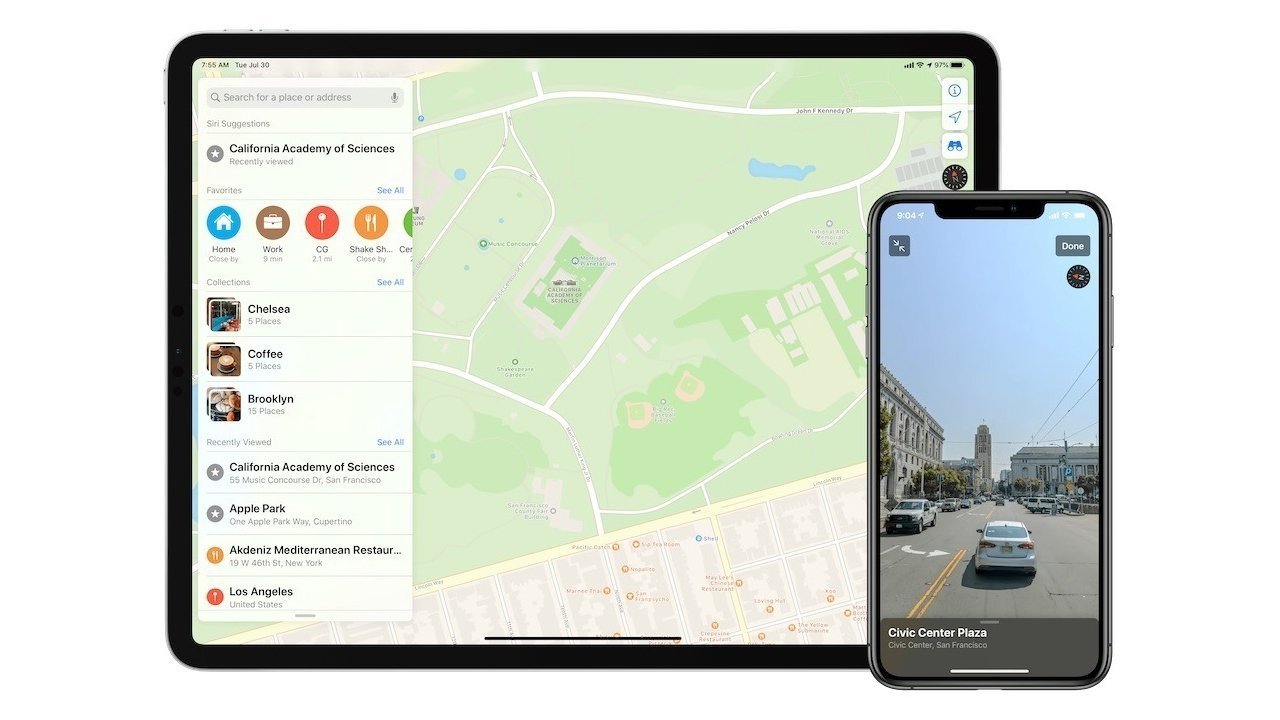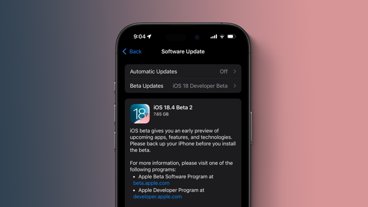The Wall Street Journal has just noticed that people do actually like and use Apple Maps, a change that took only 11 years to be acknowledged.
Apple Maps had what could be characterized as a terrible start to its existence in 2012, with a catalog of issues that didn't help users shift over to it from Google Maps. Now, over a decade later, the Wall Street Journal acknowledges that Apple Maps is no longer terrible.
The profile of the navigational tool published on Monday refers to the "hot-mess territory" of Apple Maps' launch, including considerable map errors that threatened lives, as well as a poorly implemented 3D Flyover. The issues were sufficient enough for Maps chief Richard Williamson to be fired from the company, and for CEO Tim Cook to offer an apology to customers.
After asking users and user experience analysts, the report deems that Apple has finally fixed the service enough to be usable. This apparently occurs after a decade of upgrades, updates, and refinements to the service by Apple's engineers.
"Some users are finding reasons to switch to Apple Maps, including its clear public directions and visually appealing design," the article claims. It even quotes Craig Federighi stating "Maps has come a long way, and people have noticed," albeit from WWDC 2020, three years ago.
Changes of opinion
A number of reasons from users are also mentioned as proof of this change. However, while the headline and the initial tone proposes the change in sentiment was a more recent event, its first example goes completely against that.
Airline industry analyst Jason Rabinowitz claimed they switched to Android to use Google Maps more easily after being "incensed" by Apple Maps' introduction. He then returned to iPhone in 2015, and returned to Apple Maps after the introduction of transit features.
In another example, Apple Maps became more useful to a "Google Maps power user" after being prompted to use it in an airport, complete with recommendations within the terminals of shops and restaurants.
"It made me kind of revisit and rethink some of my prior assumptions about it," Jane Natoli explains. "Whatever initial reputational hurdles that Apple Maps faced, I think they've jumped over those."
Throughout the piece, Apple's ability to present data to users in Apple Maps is seen as a big selling point, as it's "really good at making things look pretty," user Agelica Nguyen insists. By contrast, Rabinowitz calls Google's own transit layer "sinfully ugly to look at," due to being heavily cluttered.
Despite Apple's decade of work, the article still says Apple has more it can do.
Referencing two users, it claims Apple still needs to fix routing, with one "led astray" in Boston . The other, a Los Angeles intern, believed that Apple Maps routed him through residential neighborhoods to avoid gridlock, but insists that the diversion still added time to the commute compared to sitting in traffic.
 Malcolm Owen
Malcolm Owen







-m.jpg)






 Christine McKee
Christine McKee
 Marko Zivkovic
Marko Zivkovic
 Mike Wuerthele
Mike Wuerthele

 Amber Neely
Amber Neely
 Sponsored Content
Sponsored Content
 Wesley Hilliard
Wesley Hilliard









34 Comments
And didn't even mention that Google Maps couldn't figure out rural addresses that were formatted similar to N5555 Someplace Rd. It happily dropped you in the dead center of the road, didn't matter if that road spanned three counties. We used to have to post maps on our business website that included 20+ addresses. To post a Google Map I had to manually look up each address on Apple Maps to get the correct location and move the pin for that address to the actual location. One of the biggest reasons I used Apple Maps a lot from the start.
I find Apple Maps dangerous. Here's why: You're driving along with them on CarPlay and you come up to a complex intersection. The map zooms in and it looks so mind-blowingly amazing I find it hard to keep my eyes on the real road. The renderings, down to the complex markings at some intersections, are just so nice.
Biggest sell for me was not having Google slurp up every bit of information about where I am, where I'm going, how long I stay in certain places, etc, etc. But I agree that Apple took about 5 years to iron out most of the kinks with Maps. Which isn't typical for Apple, but then they weren't great at cloud services in general at the time.